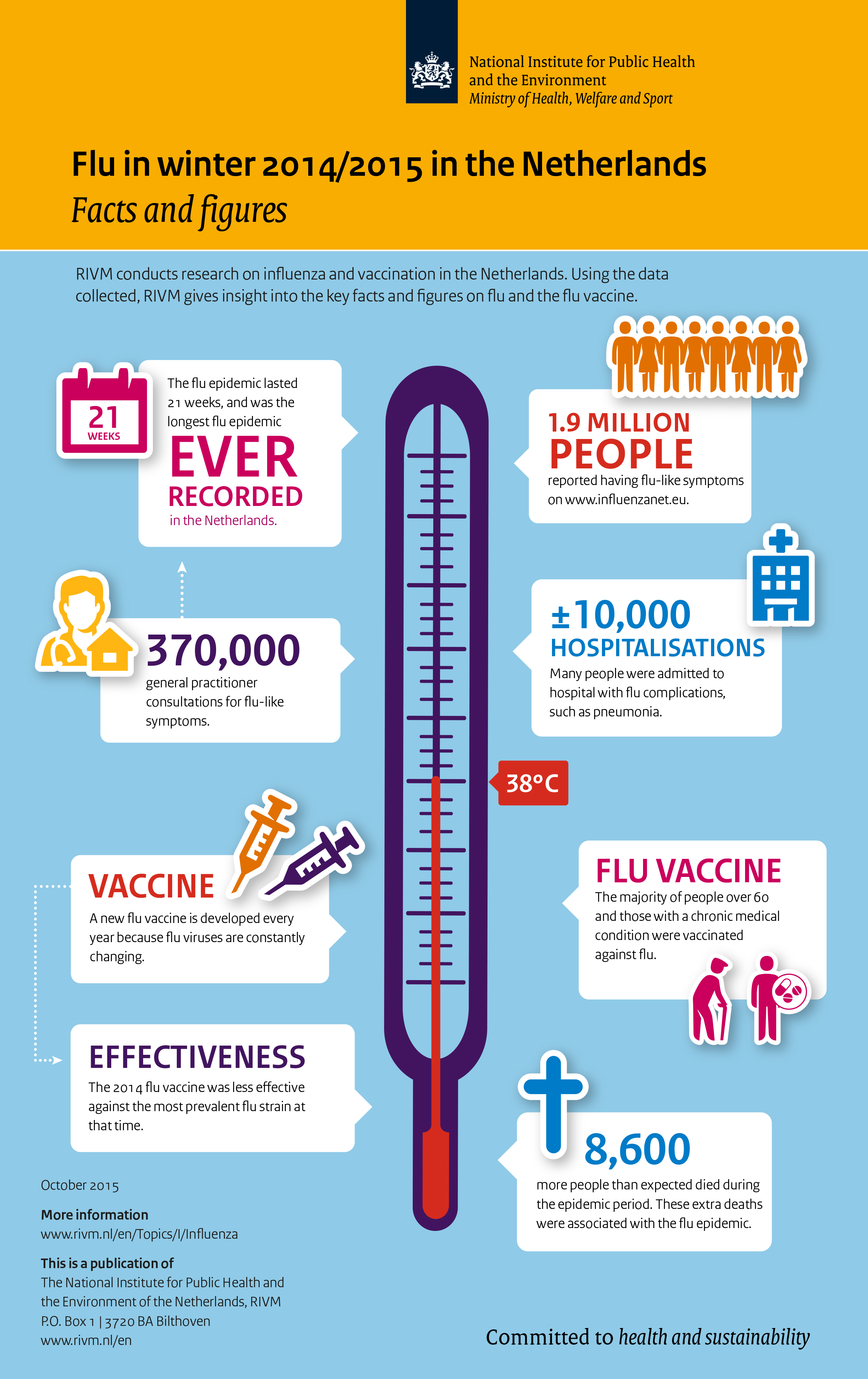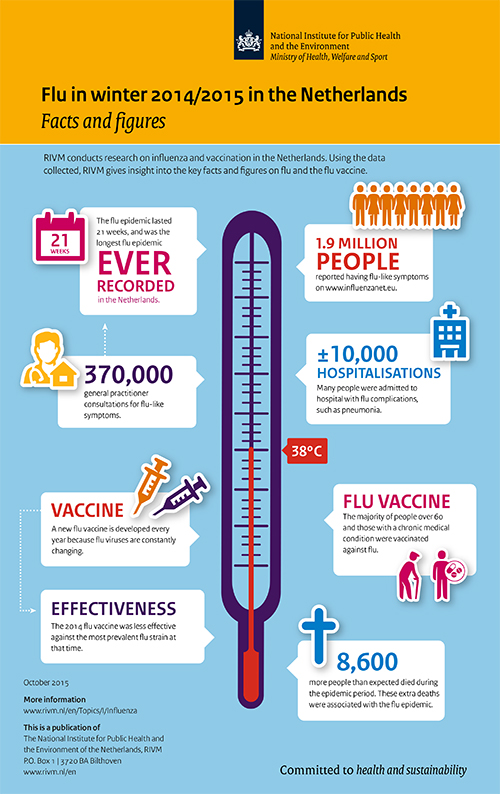Influenza: what does RIVM do?

The term ‘influenza’ invokes varying associations: many people confuse it with a nasty cold, while others emphasise that people can die from it. Providing consistency was thus one of the reasons for RIVM to improve the provision of information about influenza in 2015. Among the ways of realising this was the active provision of information about influenza during the influenza season, and about RIVM’s activities.
What do we do, and with whom?
RIVM is the ultimate scientific institute that researches influenza and the influenza vaccination and provides advice based on this scientific knowledge. Our institute clarifies the main facts and figures about influenza, in addition to influenza vaccination and its effectiveness. People thus know where they stand and are able to make an informed decision about whether or not to be vaccinated.
RIVM collects data from various partners for this, the most important of which is the Nivel institute, which since 1970 has been weekly registering the number of people who go to their GP because of influenza-like symptoms. The GPs send the throat and nose cotton swabs from a sample of these patients to RIVM, where they are tested for the influenza virus. The Erasmus Medical Centre (EMC) then further analyses these viruses. In addition, a number of hospitals state the number of instances in which influenza is diagnosed in their laboratories.
The figures about the Netherlands are reported weekly to the World Health Organization (WHO) and the European Centre for Disease Prevention and Control (ECDC). They are used for international policy and the annual determination of the composition of the influenza vaccine that will be used worldwide.
Influenza vaccine
In the Netherlands, the influenza vaccine is offered to people over 60 years and those with a medical risk, such as asthma. The Stichting Nationaal Programma Grieppreventie (SNPG) coordinates the implementation of the annual influenza vaccine campaign. RIVM is in charge: it supervises quality and provides information for citizens about the influenza vaccination.
To ensure the influenza vaccine is available in good time, the viruses used for it are established in the month of February prior to the influenza season. In the meantime, the influenza viruses may change somewhat, as a result of which the viruses in the vaccine may deviate from the viruses that circulate during the new influenza season. Another virus than was expected may circulate, as a result of which the influenza vaccine is less effective. This was the case in the 2014/2015 influenza season, during the longest lasting epidemic ever measured: 21 weeks compared to the average 12 weeks over the last five seasons. In the event of an influenza epidemic, during two or more successive weeks over 51 in 100,000 people suffer from influenza-like symptoms and there is evidence that people carry the virus.
Active communication
During the last influenza season, infographics were used for the first time in order to concisely communicate the facts and figures about influenza. Updated influenza figures were placed weekly on the website, and ‘Facts about influenza’ were shared via social media, in addition to news reports about the influenza epidemic.
